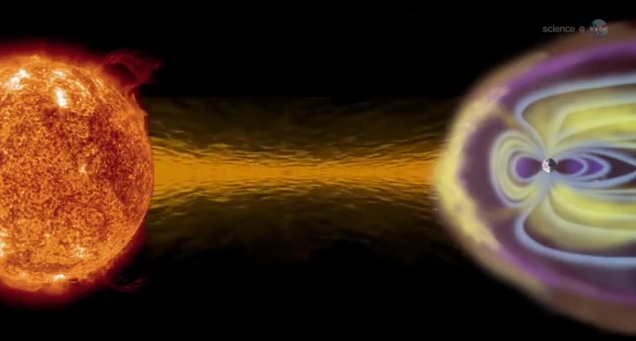

I mention all the time how the scientists of Earth are making major breakthroughs and discoveries daily, well today is no exception!
A NASA-funded researcher at the University of Iowa has found in the Earth’s atmosphere what can only be described as ‘portals’, and they may actually have the ability to allow humans to travel through space AND time!
NASA writes:
A favorite theme of science fiction is “the portal”–an extraordinary opening in space or time that connects travelers to distant realms. A good portal is a shortcut, a guide, a door into the unknown. If only they actually existed….
It turns out that they do, sort of, and a NASA-funded researcher at the University of Iowa has figured out how to find them.
“We call them X-points or electron diffusion regions,” explains plasma physicist Jack Scudder of the University of Iowa. “They’re places where the magnetic field of Earth connects to the magnetic field of the Sun, creating an uninterrupted path leading from our own planet to the sun’s atmosphere 93 million miles away.”
Observations by NASA’s THEMIS spacecraft and Europe’s Cluster probes suggest that these magnetic portals open and close dozens of times each day. They’re typically located a few tens of thousands of kilometers from Earth where the geomagnetic field meets the onrushing solar wind. Most portals are small and short-lived; others are yawning, vast, and sustained. Tons of energetic particles can flow through the openings, heating Earth’s upper atmosphere, sparking geomagnetic storms, and igniting bright polar auroras.
NASA is planning a mission called “MMS,” short for Magnetospheric Multiscale Mission, due to launch in 2014, to study the phenomenon. Bristling with energetic particle detectors and magnetic sensors, the four spacecraft of MMS will spread out in Earth’s magnetosphere and surround the portals to observe how they work.
Just one problem: Finding them. Magnetic portals are invisible, unstable, and elusive. They open and close without warning “and there are no signposts to guide us in,” notes Scudder.
Actually, there are signposts, and Scudder has found them.
Read more and watch a video explanation at NASA.gov
